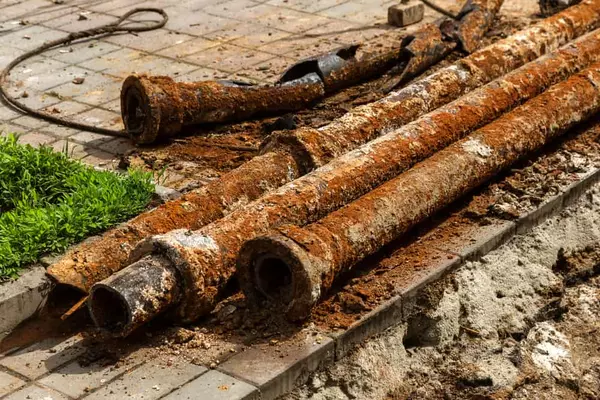"Buyer Beware! The Hidden Dangers of Cast Iron Pipes in Your Home"

When it comes to plumbing materials, cast iron has been a popular choice for centuries. However, as with anything, it has its drawbacks. As a homeowner or potential homebuyer, it's essential to be aware of the potential problems associated with cast iron pipes. In this blog post, we'll dive deep into the world of cast iron plumbing, discussing the common issues and warning signs you should look out for.
-
Corrosion and Rust One of the most significant issues with cast iron pipes is corrosion and rust. Over time, moisture and chemicals in the wastewater can cause cast iron pipes to rust from the inside out. This corrosion can lead to leaks, breaks, and ultimately, a compromised plumbing system.
-
Cracks and Breaks Cast iron pipes are prone to cracks and breaks as they age. The material becomes more brittle over time, making it more susceptible to damage from pressure or external forces. This can lead to costly repairs and potential water damage to your home.
-
Tree Root Intrusion Tree roots are naturally attracted to moisture and can find their way into cast iron pipes through cracks or loose joints. Once inside, they can grow and expand, causing further damage to the pipe and potentially leading to blockages or even pipe collapse.
-
Clogged Pipes Another common problem with cast iron pipes is clogging. As these pipes age and corrode, the internal diameter narrows, making it easier for debris and waste to accumulate and cause blockages. Regular maintenance can help prevent clogs, but sometimes a full replacement is necessary.
-
Environmental Impact The process of producing cast iron pipes is energy-intensive and can contribute to greenhouse gas emissions. Additionally, the use of cast iron as a plumbing material may not align with environmentally-conscious homeowners' values.
Warning Signs to Look Out For: If your home has cast iron pipes, it's essential to keep an eye out for potential warning signs. These may include:
- Slow-draining sinks or tubs
- Frequent backups or clogs
- Discolored water
- Foul odors near drains or in the basement
- Damp or moldy areas near pipes
- Patches of lush, green grass in your yard, indicating underground leaks
Conclusion: Cast iron pipes may have served homeowners well in the past, but they come with their own set of problems as they age. If you're a homeowner or potential homebuyer, it's crucial to be aware of these issues and take appropriate action to protect your investment. Consider consulting with a professional plumber to assess the condition of your cast iron pipes and discuss potential solutions, such as pipe replacement or relining.
GET MORE INFORMATION






